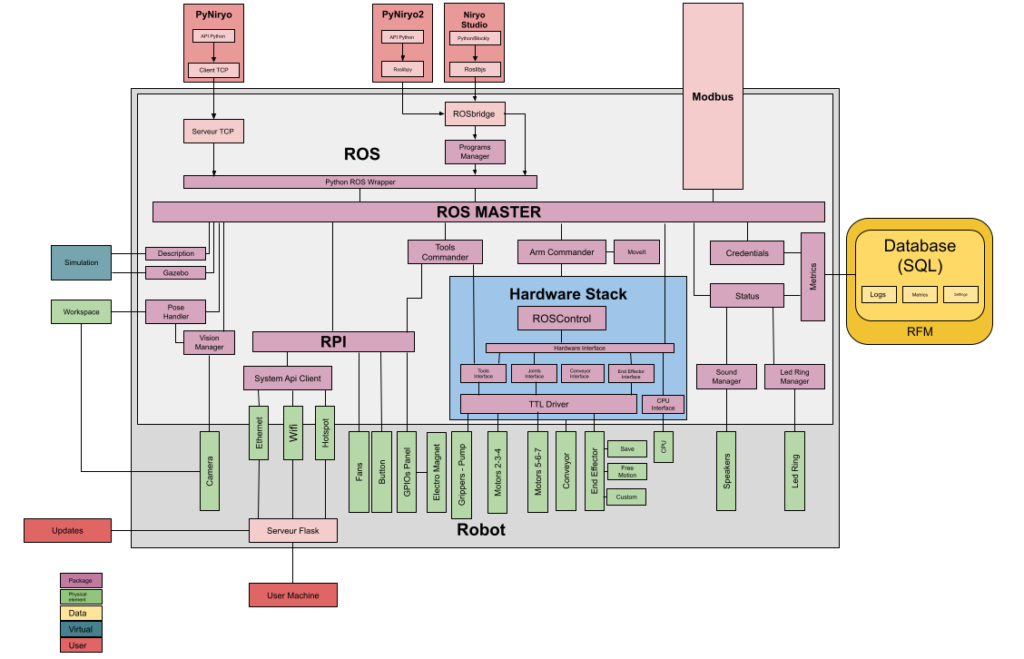More and more, robotics is becoming an exciting field that offers a wide range of opportunities for students to learn about engineering, programming, and problem-solving. With the emergence of Robot Operating System (ROS), teaching robotics has become more accessible and efficient.
In this article, we will explore some strategies and some of the best practices for teaching robotics with ROS, to help educators create engaging and effective learning experiences for their students.
Let’s now engage learners with real world experience!
1. Learning by doing
When teaching robotics with ROS, it is important to design learning activities that are engaging and challenging for students.
One effective approach is to create hands-on projects that allow students to work with real hardware and software components, and to build their own robotic systems from scratch. For example, students could design and build a simple mobile robot that uses ROS to navigate around a room, avoiding obstacles and responding to voice commands.
Another approach is to use simulations and virtual environments. For example, educators could use Simulink, a MATLAB-based graphical programming environment for modeling, simulating and analyzing multi domain dynamical systems. They’ll be able to create a virtual robot that students can program using ROS. This approach can be particularly useful to teach more advanced concepts and techniques, such as path planning and robot control.
2. Hardware and software: don’t settle for less than what’s best!
ROS is compatible with a wide range of hardware platforms, from simple mobile robots to (some) complex industrial systems. It is also compatible with a range of programming languages, including Python, C++, Java, MATLAB and Simulink.
When selecting hardware and software, it is important to consider factors such as cost, complexity, and scalability.
For instance, our educational robot Ned2 combines Raspberry Pi 4, ROS, Python and C++. Using ROS enables students not only to discover how the robot works concretely, but also to understand the compatibility between different software and hardware.
3. Did your students really get the point?
When teaching robotics with ROS, it is important to assess student learning outcomes to ensure that students are achieving the desired learning objectives. One effective approach is to use formative assessment techniques, such as quizzes, homework assignments, and group projects, to monitor student progress throughout the course.
Another approach is to use summative assessments, such as exams and final projects, to evaluate student learning at the end of the course. These assessments can be used to measure student mastery of specific concepts and skills, as well as their ability to apply these concepts and skills to real-world use cases.
4. Support and feedback are essential
Finally, when teaching robotics with ROS, it is important to provide students with the support and feedback they need to succeed. This may involve providing students with access to online tutorials and resources, as well as offering regular office hours or online support sessions. After all, ROS is an open source platform that has a huge community with plenty of documentation and resources.
It is also important to provide students with regular feedback on their progress, especially those who have doubts about their performance. This could be done either through formative assessments or through verbal feedback on their projects and assignments. This feedback can help students to identify areas where they need to improve, as well as areas where they are excelling.
To sum up, teaching robotics with ROS can be a challenging, yet rewarding experience for both educators and students. By designing engaging learning activities, selecting the right hardware and software components, assessing student learning outcomes, and providing support and feedback, educators can create effective learning experiences that prepare students for careers in robotics and other STEM fields.
With the right strategies and best practices, teaching robotics with ROS can be a powerful strategy for inspiring the next generation of roboticists and innovators. Check our other article on the topic to learn even more about ROS.












